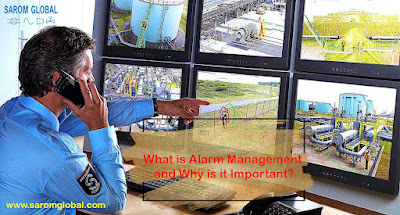How to Troubleshoot Common Industrial Process Control Problems
Process control engineering plays a vital role in optimising industrial operations and ensuring efficient and reliable production processes. However, like any complex system, process control systems can encounter problems that affect productivity and quality. In this article, we will explore common industrial process control problems and provide practical troubleshooting tips. By understanding these issues and their solutions, engineers can minimise downtime, enhance process performance, and achieve optimal control.
1. Sensor and Instrumentation Issues
The proper functioning of sensors and instrumentation is critical for accurate process control. Common problems include sensor drift, calibration issues, or faulty instruments. Troubleshooting steps involve verifying sensor accuracy, recalibrating if necessary, and replacing faulty components. Regular maintenance and periodic checks can help prevent process control instrumentation issues and ensure reliable measurements.
2. Control Loop Instability
Control loop instability can lead to oscillations, erratic process behaviour, and reduced performance. To troubleshoot this problem, engineers can start by checking the control loop tuning parameters. Adjusting the proportional, integral, and derivative (PID) controller settings can help stabilise the loop. Additionally, inspecting and addressing issues such as valve stiction or deadband can further improve control loop stability.
3. Communication and Networking Problems
In modern process control systems, communication and networking play a vital role in data exchange and system coordination. Connectivity issues, network congestion, or equipment failures can disrupt the flow of information. Troubleshooting steps include checking network connections, resolving network configuration issues, and ensuring proper communication protocols are followed. Proper process control training, regular monitoring and maintenance of communication infrastructure are essential to preventing these problems.
4. Process Variability and Setpoint Deviations
Process variability and deviations from desired setpoints can impact product quality and efficiency. Troubleshooting requires analysing the root causes of variability, such as disturbances or equipment malfunctions. Applying statistical process control techniques, such as control charts or trend analysis, can help identify sources of variability and enable corrective actions to be taken. Regular process monitoring and analysis are essential to minimising deviations and maintaining control.
5. Software and Programming Errors
Process control software and programming errors can result in unexpected behaviour or system malfunctions. Troubleshooting involves reviewing software code, checking for logical errors, and verifying the correctness of algorithms. Regular software updates, code reviews, and thorough testing can help detect and resolve these issues before they impact production.
Conclusion
Troubleshooting common industrial process control problems requires a systematic approach and an understanding of the underlying principles. By addressing sensor and instrumentation issues, stabilising control loops, resolving communication problems, minimising process variability, and identifying software errors, engineers can optimise process control and ensure smooth operations. Regular maintenance, proper training, and continuous improvement efforts are key to preventing these problems and achieving effective process control.
Process control software and programming errors can result in unexpected behaviour or system malfunctions. Troubleshooting involves reviewing software code, checking for logical errors, and verifying the correctness of algorithms. Regular software updates, code reviews, and thorough testing can help detect and resolve these issues before they impact production.
Conclusion
Troubleshooting common industrial process control problems requires a systematic approach and an understanding of the underlying principles. By addressing sensor and instrumentation issues, stabilising control loops, resolving communication problems, minimising process variability, and identifying software errors, engineers can optimise process control and ensure smooth operations. Regular maintenance, proper training, and continuous improvement efforts are key to preventing these problems and achieving effective process control.




Comments
Post a Comment